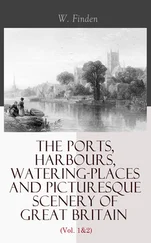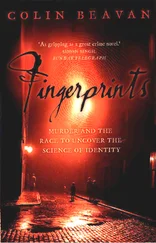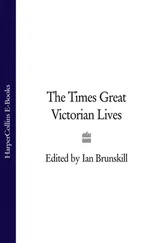Once Whicher and Constance had left, the magistrates sent to Frome for Dr Mallam, Saville's godfather, and for 'a woman who had previously lived at Mr Kent's' - probably Emma Sparks, the former nursemaid. The likelihood was that Whicher had cited the testimony of both to the magistrates, who now wanted to hear it first-hand.
The magistrates ordered that Road Hill House be searched again for the nightdress. Samuel Kent let in the police, and in the late afternoon everything on the premises was 'turned over and emptied, from garret to cellar', said the Frome Times . The nightgown was not found.
Whicher must have hoped that the arrest would shock Constance into a confession. One of his favoured ruses was to bluff when he had no evidence, to accuse with confidence. This technique played a part in his first reported arrest - of the housemaid wearing a boa in a Holborn brothel - and in a story that he told Dickens about catching a horse-thief in a lonely country pub. 'It's no use,' Whicher said to the man he suspected but had never before met. 'I know you. I'm an officer from London and I take you into custody for felony.' He saw off the crook's two associates by pretending he had friends in tow: 'I'm not alone here, whatever you may think. You mind your own business, and keep yourselves to yourselves. It'll be better for you, for I know you both very well.' The horse-thief and his pals had given way. Constance had not. Whicher now had a week in which to find the evidence to justify her committal for trial.
From Trowbridge, Whicher sent a five-shilling telegraphic message to the day-and-night telegraph station on the Strand, near Scotland Yard, asking Sir Richard Mayne to send help. 'I have this day apprehended, on a warrant, Constance Kent the third daughter who is remanded for a week. The magistrates have left the case entirely in my hands to get up the evidence. I am awkwardly situated and want assistance. Pray send down Sgt Williamson or Tanner.' Williamson and Tanner were Whicher's most trusted sidekicks. When Mayne received the message later that day he wrote on the reverse: 'Let Sgt Williamson or Tanner go immediately.'
Detective-Sergeant Williamson was summoned urgently to Mayne's house in Chester Square, Belgravia, on Friday afternoon. The Commissioner gave him his instructions to go to Road, and Williamson took a cab on to the Strand telegraph office, from where he dispatched a message to Trowbridge telling Whicher he was coming.
Frederick Adolphus Williamson - 'Dolly' - was Whicher's protege. They had worked together often, most recently on the capture of Emily Lawrence and James Pearce, the celebrated jewel thieves. Dolly was a clever, energetic man of twenty-nine, who studied French in his spare time. He had a round, soft face and kindly eyes. His father, a police superintendent, had set up the first police-station library. Dolly shared lodgings in I Palace Place, Great Scotland Yard, with sixteen other single policemen. One of these, Tim Cavanagh, later gave an account of Dolly's relationship with a cat that had attached itself to the house. This animal, Tommas, had a habit of 'killing and eating the local cats', according to Cavanagh, and the officers' neighbours demanded that he be destroyed. 'Much to our regret, we had to put a stone around the poor old fellow's neck and drop him into the river. This was a great shock to "Dolly," who was much attached to "Tommas," and, if I may let a secret out now, actually trained the "warrior" for his midnight work. On more than one occasion did [Tommas] bring in a nice piece of venison, or a hare, or a rabbit from a near neighbour.' Williamson emerges from this as both ruthless and tender-hearted, a man who could train a cat to kill and then mourn its death. In time, he was to lead the detective department.
Whicher could not know whether the public would believe an adolescent girl capable of such a horrible, and well-organised, crime as the murder at Road Hill House. But he knew from his experience of the London 'rookeries', or slums, what dark mischief children could get up to. On 10 October 1837, during Whicher's first month in the force, a girl of eight was caught playing a sharp trick near the rookery of St Giles, Holborn. She stood in the street crying bitterly until she had gathered a crowd about her. Sobbing, she explained to her audience that she had lost two shillings and was afraid to go home for fear of punishment. Once she had been plied with halfpennies, she moved on, to repeat the ruse a few roads away. A constable of E division watched her do this three times before arresting her. In the magistrates' court, she again pleaded terror of her parents; it is hard to know whether she was justifying or replaying her scam. 'The prisoner, crying, said that her father and mother sent her out to sell combs,' reported The Times , 'and unless she took home 2 s . or 3 s . every night they beat her cruelly, and not having sold any during the day she acted in the way described to get the money required of her.' The next day, 11 October, a girl of ten was charged with having broken a pane of glass in a raid on a Holborn watchmaker's shop. A gang of fellow ten-year-olds accompanied her to the magistrates' court. 'They were attired in a flash style,' said The Times , 'and their appearance and manners indicated that they were thieves and prostitutes, although so young.' One of the boys said he had come to pay the girl's fine of three shillings and sixpence, the cost of replacing the window. He threw the money down scornfully.
Criminal children were usually ill-used children. In Whicher's first weeks in Holborn he saw many examples of the careless or vicious ways in which parents could treat their young. His colleague Stephen Thornton arrested a drunken crossing-sweeper, Mary Baldwin (alias Bryant), a member of the most notorious family in St Giles, who was seen trying to kill her three-year-old daughter. She put the child in a bag and dashed it violently against the pavement. When a passer-by heard the girl's cries and remonstrated with the mother, Mary Baldwin ran into the road to place the bag in the path of an omnibus. The child was rescued by some of the passengers.
Since those years, it had become apparent that middle-class children, too, could be damaged or corrupt; sometimes it was almost impossible to tell one from the other, the victim from the victimiser. In 1859 an eleven-year-old girl called Eugenia Plummer accused the Reverend Hatch, her private tutor and the chaplain of Wandsworth gaol, of sexually molesting her and her eight-year-old sister while they were boarders at his house. The eight-year-old, Stephanie, confirmed the story. After a lurid trial, in which Hatch (as the defendant) was not allowed to testify,* he was sentenced to four years in prison, with hard labour. But in May 1860, a few weeks before the Road Hill murder, Hatch successfully sued Eugenia for perjury. This time it was she who was the defendant, and therefore unable to give evidence. The jury decided that she had made it all up. They agreed with the clergyman's lawyer that her accusation was 'an entire fiction, the result of a prurient and depraved imagination'.
In its influential editorial on the Road Hill murder, the Morning Post alluded to this case: 'That it should be a child [who killed Saville] would be incredible if Eugenie Plummer had not taught us to what length the wicked precocity of some children will extend.' Eugenia's precocity was sexual, but it also rested in her cool deceit, her composure under pressure, the containment and channelling of her disturbance into bare lies. If newspaper readers had been horrified to find a clergyman convicted of sexually molesting a child in 1859, they must have been even more disturbed, a year later, to find the situation had been turned upside-down to reveal the child as the agent of evil, a creature who had undone a man's life with her lewd imaginings.* But even this was not certain. As Blackwood's Edinburgh Magazine pointed out in 1861, the only unassailable fact was that 'one jury or the other convicted an innocent person'.
Читать дальше












